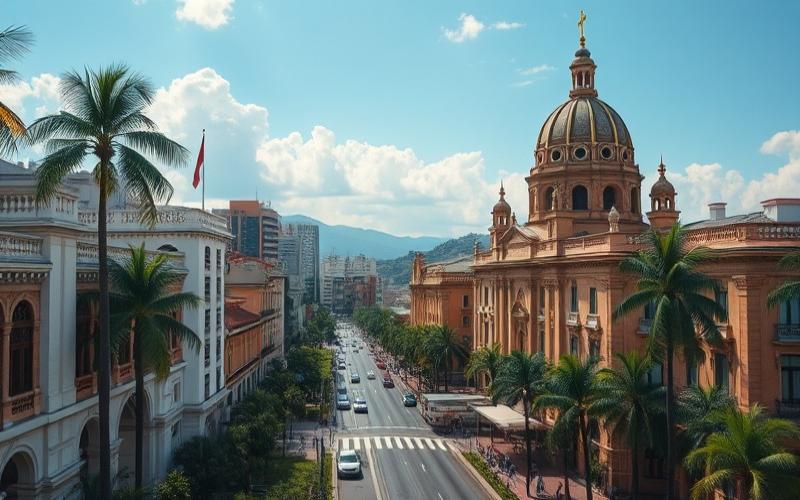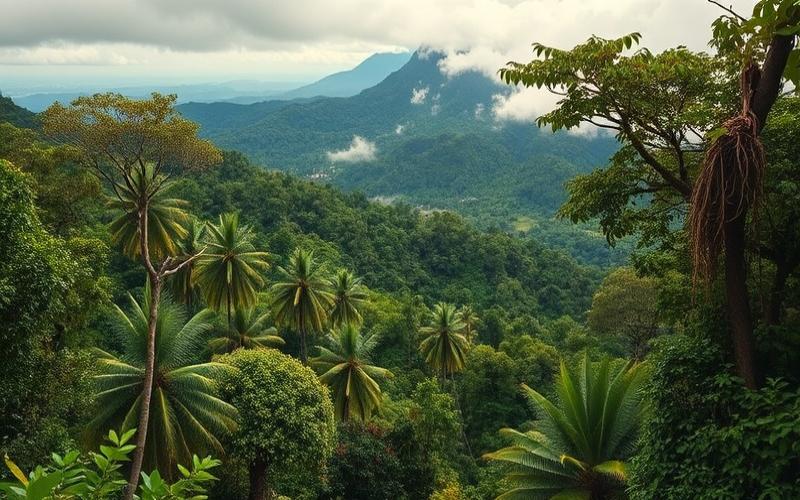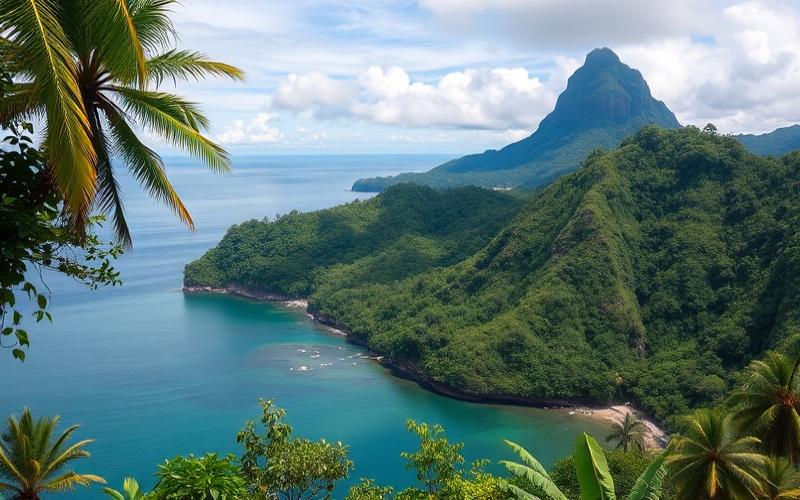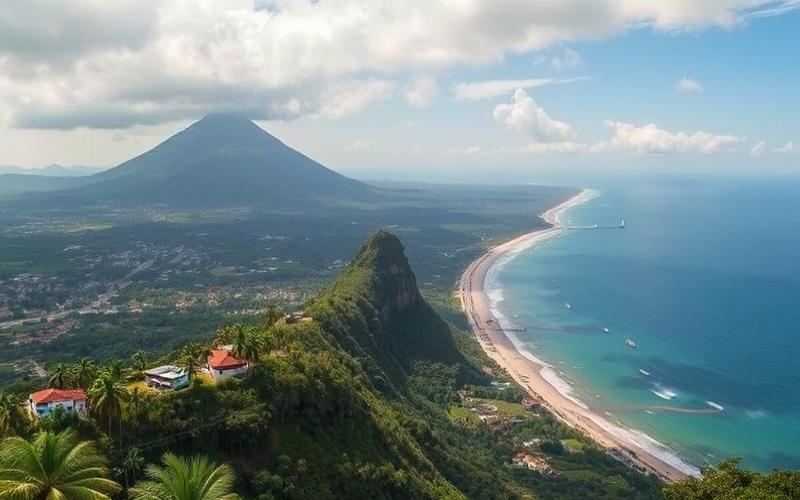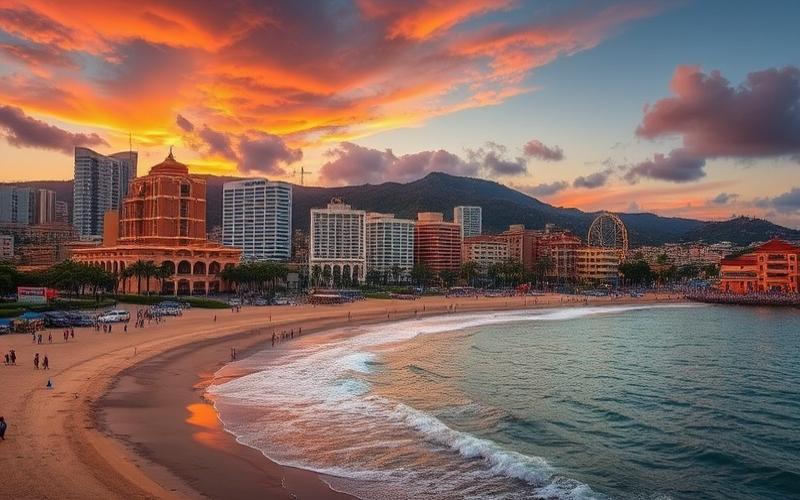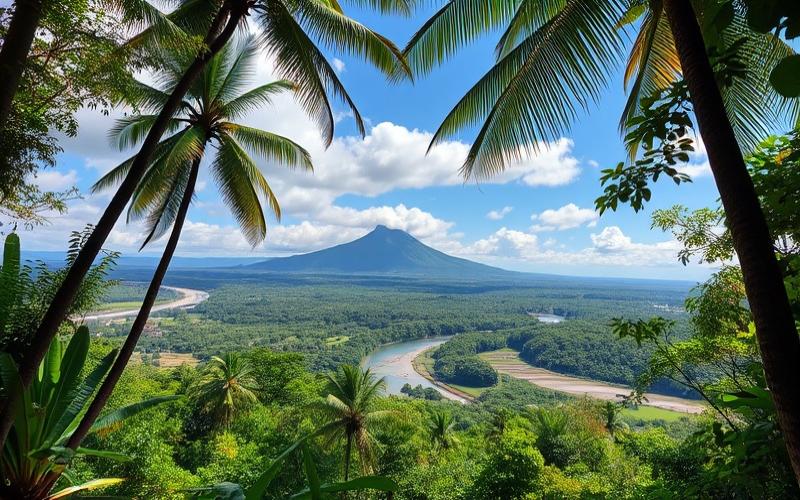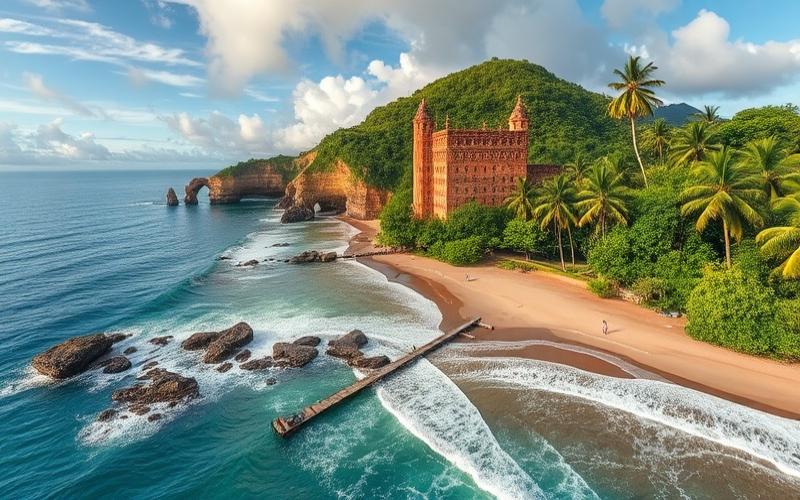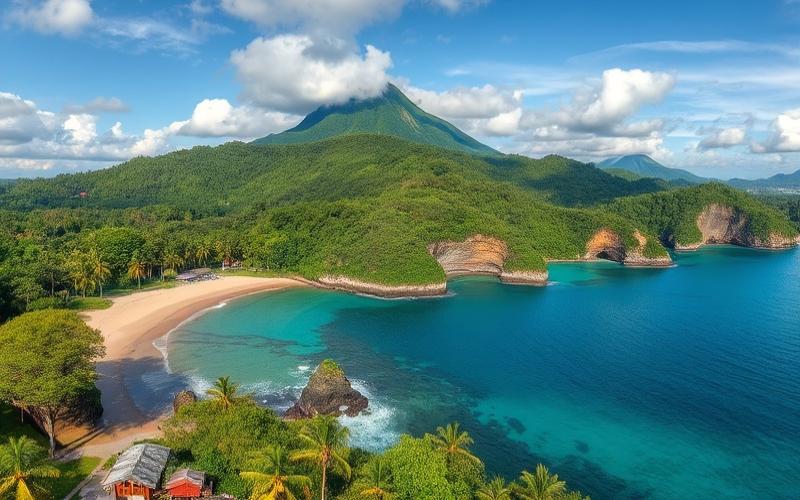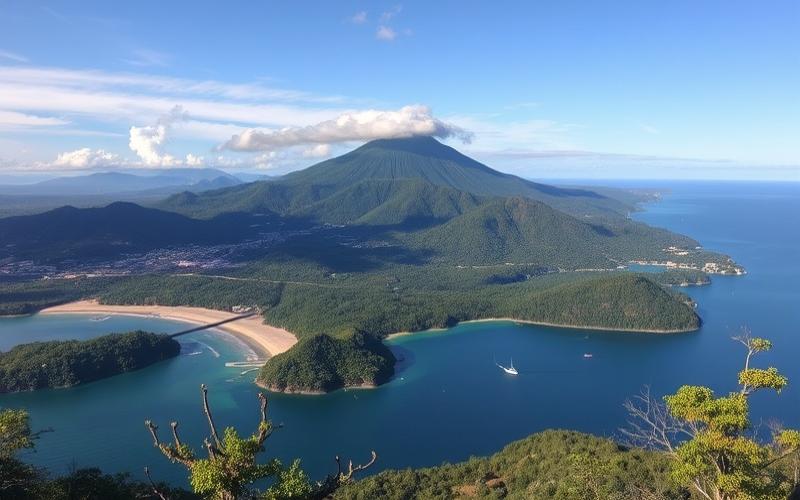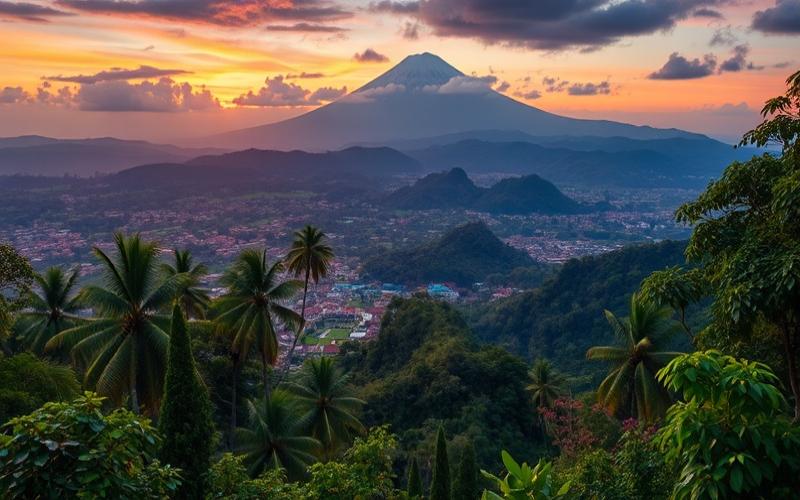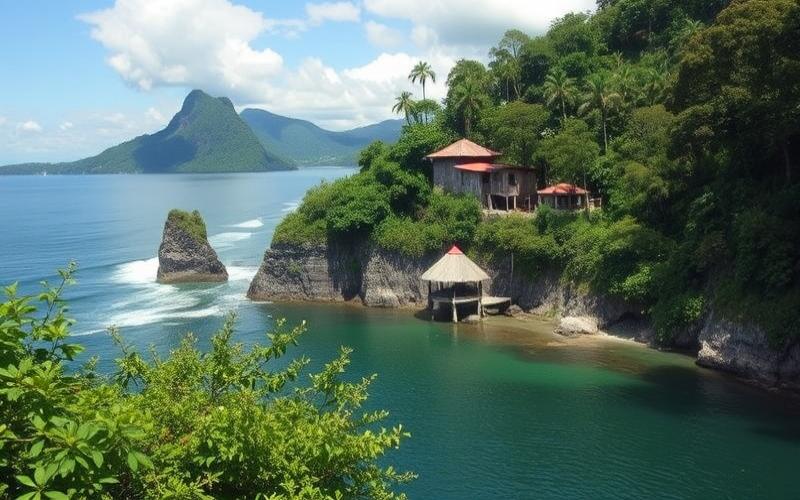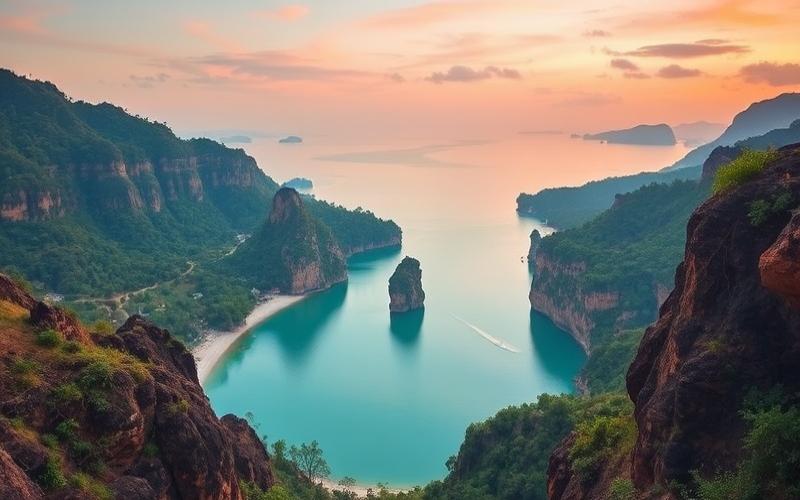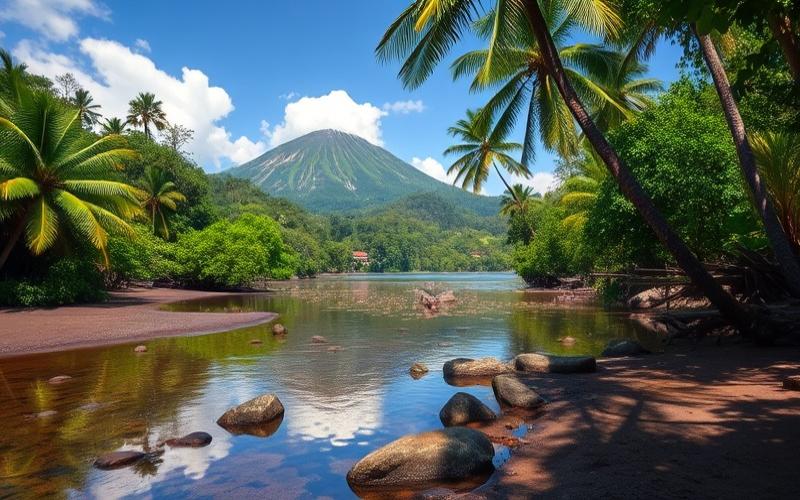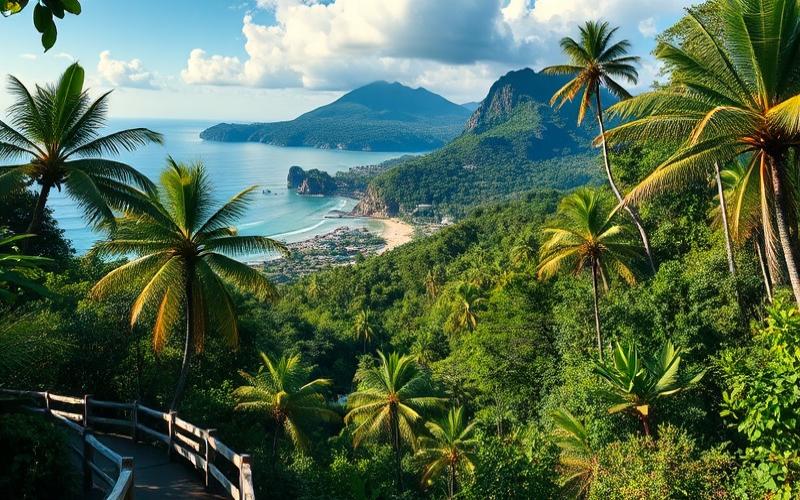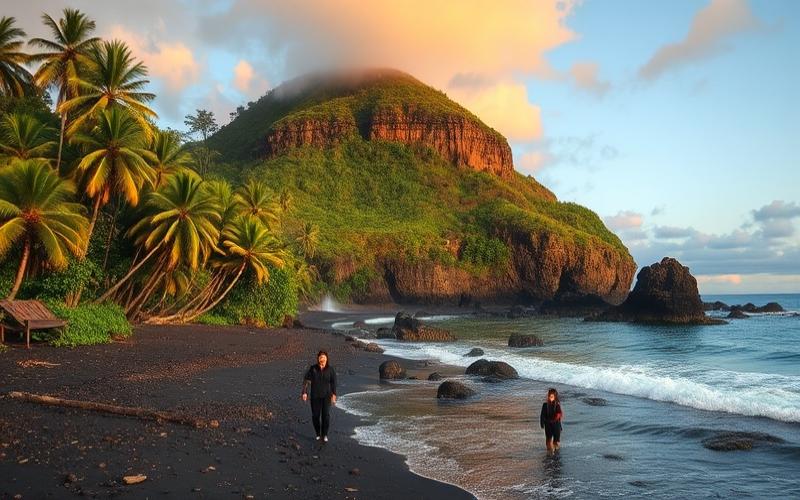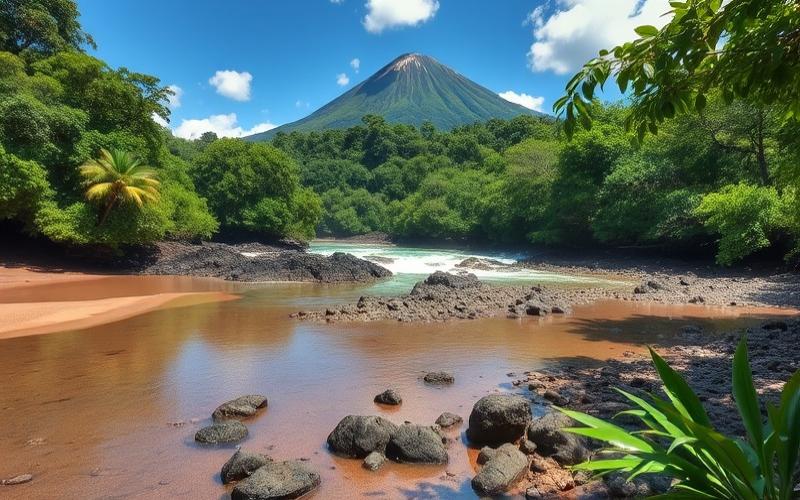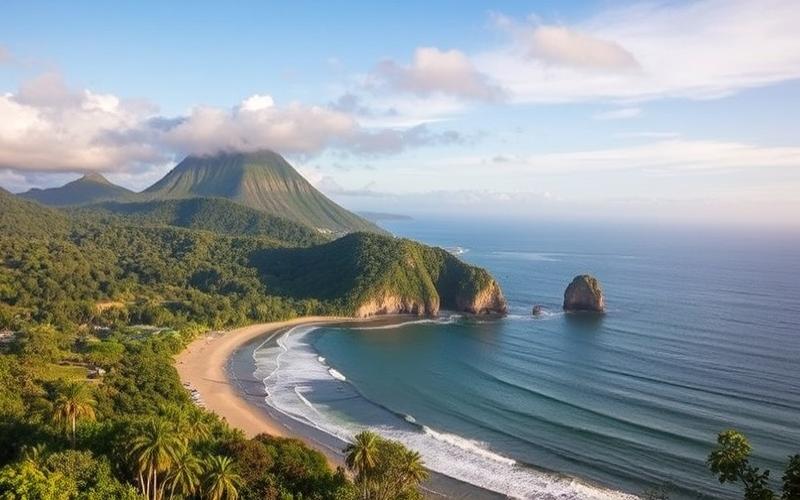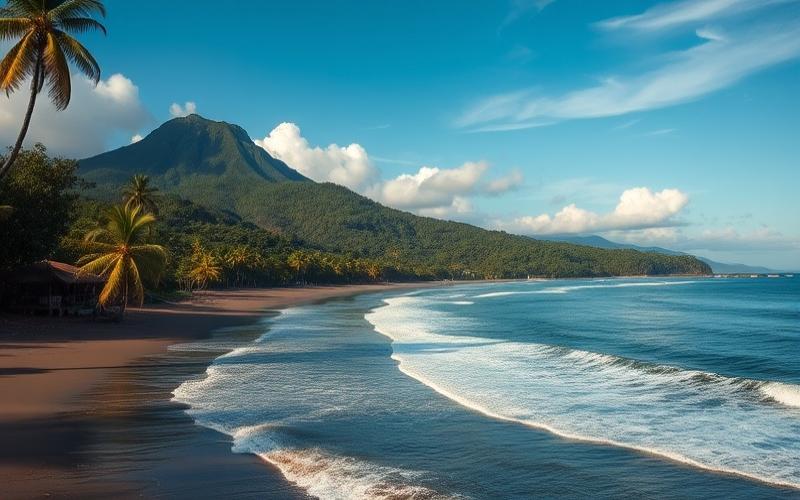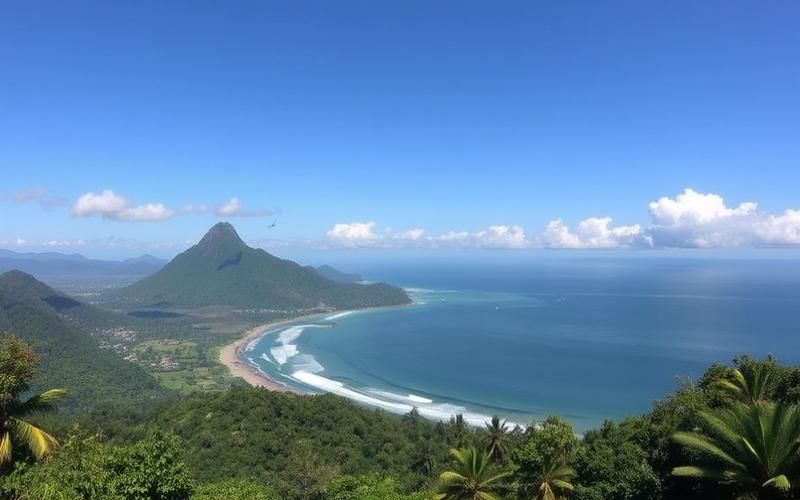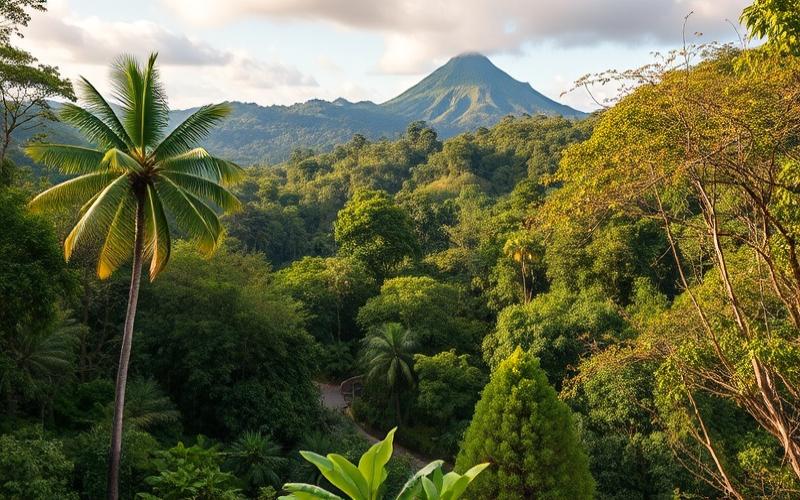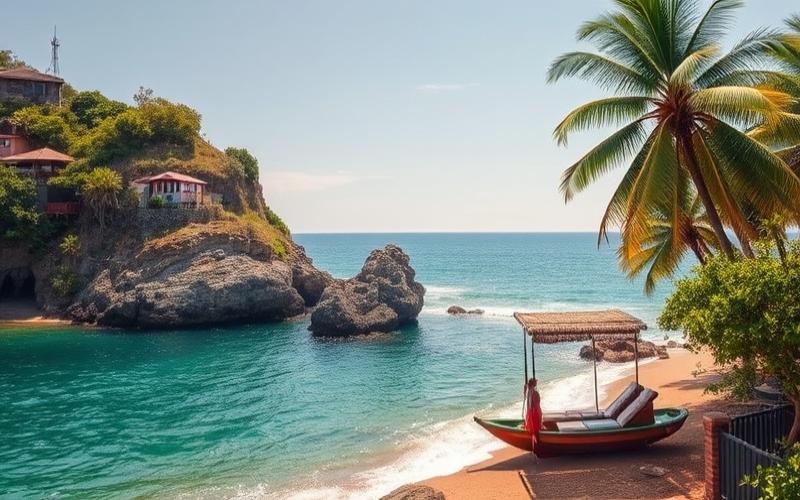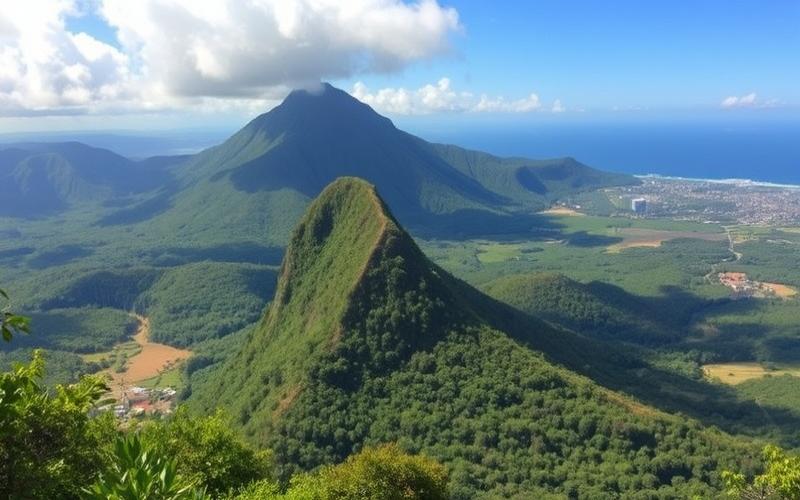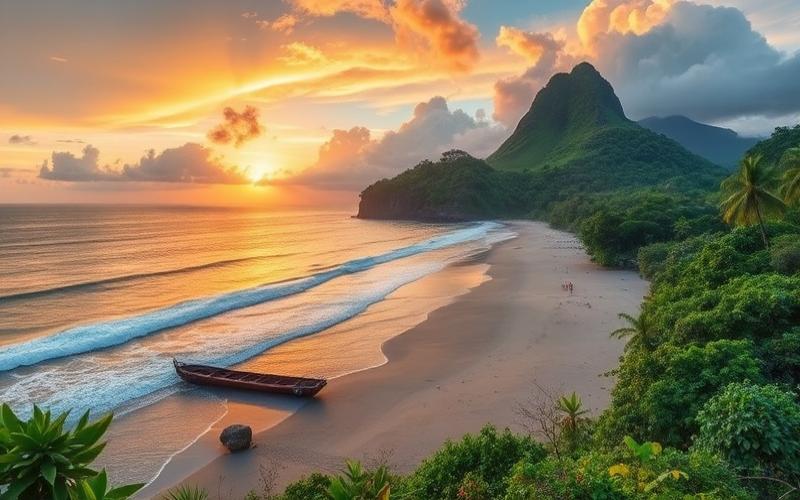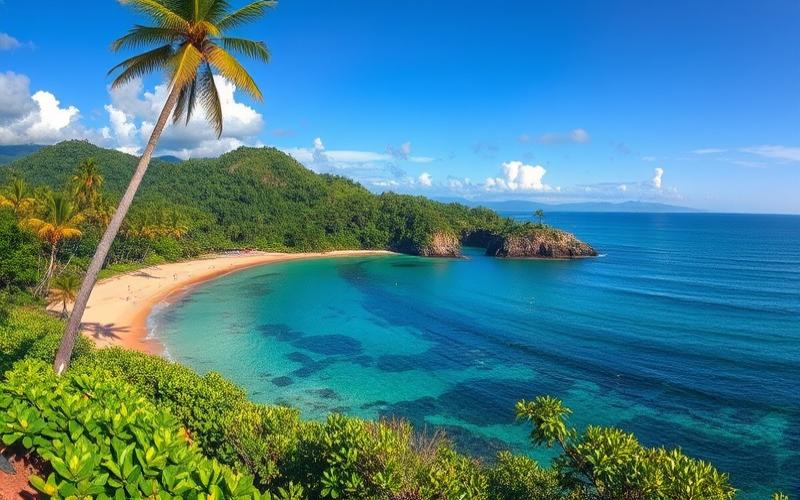
 Published on and written by Cyril Jarnias
Published on and written by Cyril Jarnias
Costa Rica: A Model of Sustainable Urban Development
Costa Rica, a country recognized for its natural wealth and commitment to sustainable development, is now turning to new urban initiatives to strengthen its economic and touristic appeal.
With projects ranging from urban center rehabilitation to the creation of innovative eco-districts, the country aims to transform the face of its cities in the coming years.
These projects, often in collaboration with international experts, promise not only to improve residents’ quality of life but also to position Costa Rica as a model of sustainable urban development in Latin America.
Good to Know:
Costa Rica aims to become a global leader in sustainable urban development, combining ecological innovation and quality of life.
Costa Rica’s Urban Visions
Costa Rica plans the development of its urban areas around an integrated vision centered on environmental sustainability, social inclusion, and technological innovation. This direction addresses the need to reconcile urban growth with the exceptional preservation of the country’s biodiversity.
Major Strategies for Sustainable Urban Growth
- National Roadmap for Urban Sustainability:
Costa Rica has established an ambitious roadmap guiding its urban policy until 2050. This aims for:
- Continuous improvement of public policies in urban planning.
- Coherence between local and national strategies, with particular attention to adaptability according to local contexts.
- Engagement in international initiatives such as CHAMP to strengthen multi-level partnerships.
- Responsible Management of Natural Resources:
- Constant improvement of public waste management systems.
- Active promotion of recycling through citizen education.
- Deployment of nature-based infrastructure (ecosystem-based solutions) against increasing urban flooding.
- Carbon Emission Reduction:
Urban planning plans promote:
| Project or Measure | Main Objective | Expected Environmental Impact |
|---|---|---|
| San José Center Regeneration | Densification and functional mix | Reduction in motorized travel |
| Urban Green Spaces | Climate adaptation | CO₂ capture, heat mitigation |
| Soft Mobility & Clean Public Transport | Reduction in transport emissions | Less air pollution |
- Exemplary Projects in San José:
- “Vision San José 2050” Master Plan based on multidimensional analysis (environmental, social, economic).
- Productive reconversion focused on culture, sustainable tourism, and high technology in four central districts.
- Three pilot projects per urban center studied for their ecological and socioeconomic feasibility.
Sustainable Mobility & Smart Infrastructure
The country is heavily investing in:
- Modernization of the public network (electric buses, suburban trains).
- Development of a secure urban cycling network.
- Gradual introduction of smart infrastructure: connected sensors for efficient energy management, automated LED lighting…
Participatory Engagement & Community Inclusion
The Costa Rican approach strongly relies on:
- Systematic consultation during national-local dialogues involving municipalities and residents around key decisions (“National Local Dialogue,” educational campaigns).
- Support for co-constructed projects with local associations to ensure specific social needs (e.g., disadvantaged youth) are integrated from the design phase.
- Multi-level shared governance
- Active citizen participation
- Balance between local economic development and preservation of natural heritage
Costa Rica’s urban visions are thus based on resilient urban planning where each project must simultaneously contribute to reducing the national ecological footprint while concretely improving social well-being.
Good to Know:
Costa Rica stands out for its innovative vision in urban development, prioritizing sustainable growth that respects the environment and its rich biodiversity. The country implements strategies to design low-carbon cities, integrating green infrastructure projects and promoting responsible use of natural resources. Authorities invest in developing accessible public transportation, thereby reducing the carbon footprint, and incorporate smart technologies to improve urban management. A concrete example is the Urban Master Plan promoting ecological urban planning in San José. Furthermore, Costa Rica is firmly committed to participatory urban planning, ensuring the inclusion of local communities to better meet the actual needs of the population.
Real Estate Transformations and Market Impact
Major Ongoing or Planned Real Estate Transformation Projects in Costa Rica
- Guanacaste (northwest)
- Transformation of the Dreams Las Mareas complex into a JW Marriott All-Inclusive Resort in Costa Elena, La Cruz canton, near El Jobo beach. Work begins: July 2025, expected opening: second quarter 2026.
- Development around the new Marina Flamingo, with numerous residential projects, hotels, and businesses to meet growing demand linked to the expansion of the nautical and tourism sectors.
- Osa Peninsula
- Proliferation of eco-lodge and luxury hotel projects integrated into the jungle, targeting international clients seeking exclusive ecotourism experiences.
- Greater San José (central valley)
- Expansion of suburbs and new residential neighborhoods for expatriates and the emerging middle class.
- Gated community and mixed-use building (residential, commercial, offices) projects in satellite cities around San José.
- Central and South Pacific Coast
- Growth of residential and hotel developments in Jacó, Manuel Antonio, and Uvita, particularly to meet the rise of remote work and the arrival of digital nomads.
Economic Implications on the Local Real Estate Market
- Price Increases: In 2024, foreign investment in real estate grew by over 18%, and property prices in tourist and coastal areas increased by an average of 15 to 20% year-over-year.
- Increased Housing Demand: Population growth, returning expatriates, influx of digital nomads, and high-end tourism stimulate demand, especially for high-end, eco-friendly housing and second homes.
- Attractiveness for Investors: Political stability, favorable taxation, and tourism growth position Costa Rica as one of the most attractive real estate markets in Latin America.
Recent Statistics and Expert Statements
- According to the Costa Rican Chamber of Construction, private investment in real estate grew by 15% in 2024.
- Uriel Burak (Marriott International):
“This project marks the beginning of a strategic collaboration and confirms Costa Rica’s appeal as a luxury destination and for sustainable investments.”
- Local and international experts highlight strong demand for projects integrating sustainable development and green building criteria.
International Examples Illustrating Trends
| Country | Flagship Project | Impact on Local Market |
|---|---|---|
| Mexico | Riviera Maya (Tulum, Playa) | Real estate boom, price increases, appeal to digital nomads, environmental pressures |
| Portugal | Lisbon and Algarve | Influx of expatriates, urban renewal, price increases, increased regulation |
| Colombia | Medellín (El Poblado) | Urban transformation, new foreign clientele, rental supply explosion |
Environmental and Social Concerns
- Pressures on Biodiversity: Projects in coastal and forest areas threaten fragile ecosystems (deforestation, water management, land artificialization).
- Gentrification and Housing Access: Rising rents, difficulties for locals to access property in some tourist areas.
- Regulatory Adaptation: Authorities impose strict green building and landscape integration standards, encouraging developers to prioritize ecotourism, renewable energy, and sustainable resource management.
Integration into Sustainable Urban Growth
New projects are part of managed urban growth approaches, valuing mixed-use, soft mobility, preservation of natural spaces, and social inclusion.
The state and municipalities encourage environmental certifications and public-private partnerships to ensure balanced development.
Key Takeaways:
- Major Areas: Guanacaste, Osa, Greater San José, Central and South Pacific.
- Economic Effects: Price increases, dynamic demand, opportunities for investors.
- Challenges: Environmental pressures, gentrification risks, need for adapted regulation.
- International Trends: Emphasis on ecotourism and sustainable development models.
Good to Know:
Real estate transformations in Costa Rica, particularly in the San José and Guanacaste areas, strongly influence the local real estate market through projects like the Metropolitan Tower or Santa Ana Residences, which stimulate price increases, thereby enhancing attractiveness for international investors. In 2023, a 12% increase in residential property prices was observed, fueled by growing demand and increased interest in eco-friendly developments, such as eco-districts. Claude Dubois, a real estate expert, notes that these projects increase local wealth while posing environmental challenges regarding ecological integration. Inspired by successful sustainable initiatives in Scandinavia, Costa Rica seeks to minimize negative social impact while strengthening urban cohesion, but concerns remain about potential displacement of local communities.
New Opportunities for Investors
Recent Urban Development Projects in Costa Rica Opening Investment Perspectives
- San José Urban Regeneration Master Plan: Transformation of four central districts to promote culture, tourism, and high technology. This plan integrates multidimensional strategies (environmental, social, economic) and targets catalyst projects in central areas such as the historic center, González Víquez, and Transversal 24.
- MUEVE Project (sustainable mobility): Integrated urban development around the future metropolitan train, involving fifteen municipalities. This project aims for sustainable mobility planning, safety, accessibility, biodiversity promotion, and resilience to climate extremes.
- Human Development Park in Alajuelita: Creation of an 8-hectare recreational space, including trails, pedestrian walkways, and sports facilities, benefiting nearly 90,000 residents, promoting social inclusion and quality of life.
- Deployment of Climate-Resilient Infrastructure: National project of $290.5 million launched in 2024 to increase access to flood-resilient infrastructure, with completion expected in 2029.
- Transport Infrastructure Expansion: Projects to expand Ruta 27 and construct a new international airport in Liberia, boosting connectivity and real estate attractiveness.
| Project / Initiative | Sector | Expected Impacts | Location |
|---|---|---|---|
| San José Urban Regeneration | Culture, Tech, Tourism | Increased property value, economic dynamism | Central San José |
| Sustainable Mobility (MUEVE) | Transportation | Accessibility, resilience, inclusion | Greater San José |
| Human Development Park | Social, Recreation | Social cohesion, residential attractiveness | Alajuelita |
| Resilient Infrastructure | Climate, Infrastructure | Risk reduction, land valuation | National |
| Ruta 27 & Liberia Airport | Transportation, Logistics | Real estate appreciation, tourist flows | Central Pacific, Liberia |
Potential Impact on Real Estate Market and Local Economy
- Increased Urban Demand: Expansion of Greater San José, growth of high-rise buildings, smart homes, and mixed-use projects.
- Property Appreciation: Proximity to new infrastructure and green projects stimulates prices.
- Attraction of Expatriates and Investors: The urban and suburban market increasingly attracts foreign buyers and high-income residents.
- Diversification of Supply: Growth in demand for rural properties near urban centers, responding to new lifestyles.
Recent Statistics on Foreign Investment in Costa Rican Urban Areas
- Real Estate: The sector continues to attract international investors, particularly from North America and Europe.
- Growing Investment Flows thanks to political stability, legal security, and priority given to sustainable projects and modern infrastructure.
Government Incentives to Attract Investors
- Partial tax exemptions for developers of green projects and for foreign investors in the real estate sector.
- Streamlined administrative procedures for investments above certain thresholds.
- Public-private partnership programs for financing infrastructure and sustainable housing.
- Support for innovation and clean technologies in construction.
Key Sectors Benefiting from These Developments
- Tourism: Improved accessibility and innovative urban offerings increase touristic appeal.
- Agriculture: Proximity to urban centers and infrastructure promote the growth of short supply chains and agritourism.
- Renewable Energy: Systematic integration of green energy in new urban projects and incentives for sustainable construction.
To Remember:
- Recent urban projects in Costa Rica focus on sustainability, connectivity, and inclusion.
- The real estate market benefits from appreciation supported by these initiatives.
- Government incentives enhance attractiveness for foreign investors, with positive spillovers on tourism, agriculture, and renewable energy.
Good to Know:
Recent urban development projects in Costa Rica, such as those for sustainable construction and improved transportation infrastructure, present new opportunities for investors. In 2022, foreign investment in the urban sector increased by 15%, encouraged by government incentives such as tax reductions for projects aligned with sustainable development goals. These developments energize the local real estate market, with residential and commercial projects aiming to meet growing demand. Tourism, a flagship sector of the Costa Rican economy, is expected to benefit from new infrastructure, as are agriculture and renewable energy, which see growing opportunities in distribution and export. For example, the recent “Tren Eléctrico Limonense” electric train project not only stimulates public transport but also international interest in green investments. With these advances, Costa Rica continues to attract strategic investments, benefiting various sectors of its economy.
Disclaimer: The information provided on this website is for informational purposes only and does not constitute financial, legal, or professional advice. We encourage you to consult qualified experts before making any investment, real estate, or expatriation decisions. Although we strive to maintain up-to-date and accurate information, we do not guarantee the completeness, accuracy, or timeliness of the proposed content. As investment and expatriation involve risks, we disclaim any liability for potential losses or damages arising from the use of this site. Your use of this site confirms your acceptance of these terms and your understanding of the associated risks.



